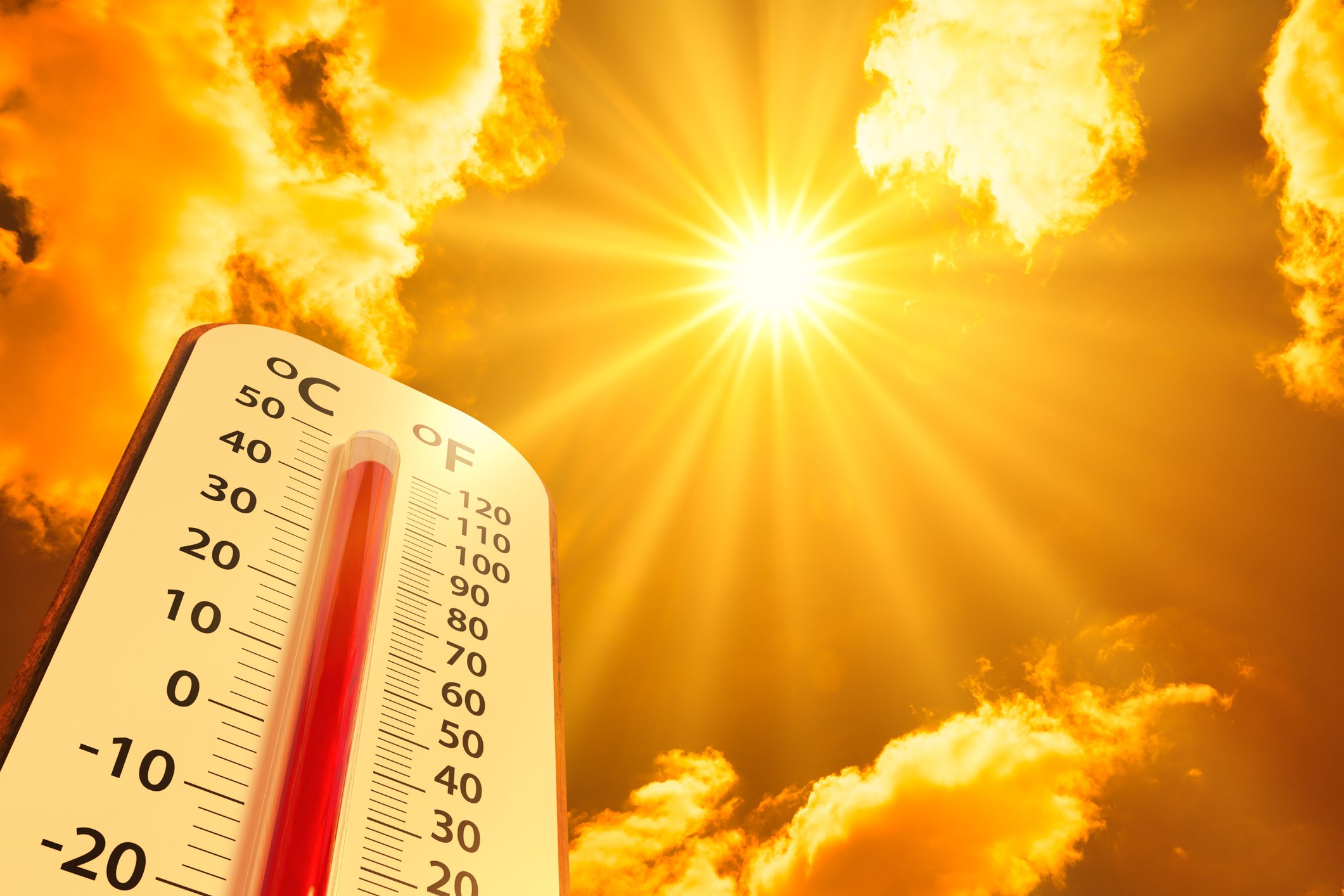
What exactly is a heat advisory, and why should you care? A heat advisory is a warning issued when the heat index is expected to reach 100°F (38°C) or higher, posing serious health risks. These advisories are crucial for preventing heat-related illnesses like heat exhaustion and heat stroke, especially among vulnerable groups such as the elderly and young children. Understanding the dangers and taking precautions can save lives. From knowing the symptoms of heat-related illnesses to recognizing the impact of climate change on heat waves, being informed helps you stay safe. Let's dive into 50 essential facts about heat advisories to keep you and your loved ones protected.
What is a Heat Advisory?
A heat advisory is a warning issued by weather services to alert the public about dangerously high temperatures. These advisories are crucial for preventing heat-related illnesses and fatalities, especially during prolonged periods of high temperatures and humidity.
- Definition of Heat Advisory: Issued when the heat index is expected to reach 100°F (38°C) or higher for an extended period, posing a significant threat to health.
- Heat Index: Measures how hot it feels outside when relative humidity is combined with air temperature, considering the body's ability to cool itself through sweating.
- Excessive Heat Watch: Issued when conditions are favorable for an excessive heat event in the next 12 to 48 hours, providing lead time for preparations.
- Excessive Heat Warning/Advisory: Issued when an excessive heat event is expected in the next 36 hours, indicating high heat conditions that pose a significant threat to life.
Understanding Heat-Related Illnesses
Heat-related illnesses can range from mild to severe. Knowing the symptoms and how to respond can save lives.
- Heat-Related Illnesses: Include heat exhaustion and heat stroke, with symptoms ranging from fainting and excessive sweating to confusion and loss of consciousness.
- Risk Groups: Young children and adults over 65 are most vulnerable to heat-related illnesses due to difficulty regulating body temperature.
- Urban Heat Island Effect: Urban areas often experience higher temperatures due to buildings and roads absorbing solar energy, resulting in higher temperatures.
- Heat Waves: Prolonged periods of excessive heat, often combined with high humidity, can cause dehydration and other heat-related illnesses.
The Impact of Heat Waves
Heat waves can have devastating effects on health, the environment, and the economy. Understanding these impacts helps in taking preventive measures.
- Heat Wave Deaths: Heat waves kill more Americans than other natural disasters like floods and tornadoes. For example, the 1995 Chicago heat wave caused over 700 deaths.
- Temperature Records: Recent heat waves have shattered temperature records across the United States, with cities like Las Vegas reaching over 120°F (48.9°C).
- Heat Risk Map: Federal agencies release heat risk maps showing areas of extreme risk, helping people prepare for severe conditions.
- Precautions for Pets: Ensure pets have cold water and shade during extreme heat. Never leave them in hot cars.
Staying Safe During a Heat Wave
Taking precautions during a heat wave can prevent heat-related illnesses. Here are some tips to stay safe.
- Hydration: Drink plenty of water and eat salty snacks to replace lost salt. Avoid alcohol and caffeine as they can dehydrate you faster.
- Medications and Heat: Certain medications can make people more vulnerable to heat. Consult your doctor about potential risks.
- Clothing: Wear loose, light clothing that allows for airflow and reflects heat. Avoid tight clothing that can block airflow.
- Check the Heat Forecast: Use tools like the CDC's heat risk dashboard to check the forecast and plan ahead.
Recognizing and Responding to Heat Illnesses
Knowing the signs of heat-related illnesses and how to respond can save lives. Here’s what to look out for and what to do.
- Pay Attention to Humidity: High humidity can prevent sweat from evaporating, increasing the danger of heat-related illnesses.
- Check In on Others: Regularly check on neighbors, friends, and family members who are at higher risk for heat-related illness.
- Warning Signs of Heat Illness: Watch for confusion and slurred speech, which require immediate emergency room attention.
- Heat Exhaustion vs. Heat Stroke: Heat exhaustion involves symptoms like fainting and excessive sweating, while heat stroke includes severe symptoms like confusion and no sweating.
Immediate Actions for Heat-Related Illnesses
Quick action can make a significant difference when dealing with heat-related illnesses. Here’s what to do in case of an emergency.
- Immediate Action for Heat Exhaustion: Move to an air-conditioned space, drink water, and use a cool compress. Seek medical attention if symptoms persist.
- Immediate Action for Heat Stroke: Call emergency services immediately, move the person to a cooler location, and apply cool compresses. Avoid immersing the person in cold water.
Common Mistakes During a Heat Advisory
Avoiding common mistakes during a heat advisory can help keep you and your loved ones safe.
- Too Much, Too Soon: Avoid overexerting yourself in the heat. Start with short periods of activity and gradually increase duration.
- Don’t Be the Frog in the Boiling Pot: Be aware of the temperature inside your car, which can rise rapidly even in moderate heat.
- Heat + Medications Don’t Mix: Certain medications can increase your risk of heat-related illnesses. Consult your doctor about potential risks.
- Wear Loose, Light Clothing: Choose light-colored, loose-fitting clothing that allows for airflow and reflects heat.
- Avoid Alcohol: Alcohol dehydrates you faster and impairs judgment, making it harder to recognize heat-related illness symptoms.
- Check on Vulnerable Populations: Regularly check on older adults, young children, and pets to ensure they are staying cool and hydrated.
- Stay Informed: Monitor local weather forecasts and heat advisories to plan your activities accordingly.
The Broader Impact of Heat Advisories
Heat advisories affect more than just individual health. They have broader implications for daily life, the economy, and the environment.
- Heat Advisory Impact on Daily Life: Can affect outdoor activities, work schedules, and social gatherings. May also lead to power outages and blackouts.
- Economic Impact: Can reduce productivity, increase healthcare costs, and affect tourism. Businesses may need to adjust operations to ensure safety.
- Climate Change: Frequency and severity of heat advisories are expected to increase due to climate change, posing a significant threat to public health.
- Global Heat Wave Trends: The last 13 months have been the hottest ever recorded globally, with record-breaking temperatures observed worldwide.
Preventing and Responding to Heat Waves
Preventing and responding to heat waves requires a combination of individual actions and community efforts.
- Heat Wave Prevention: Stay hydrated, wear appropriate clothing, seek shade, and avoid strenuous activities during peak heat hours.
- Heat Wave Response: Healthcare providers, emergency services, and community organizations must coordinate efforts to handle heat-related illnesses.
- Heat Wave Mitigation: Long-term strategies like urban planning, green infrastructure, and climate change mitigation policies can help reduce the impact of heat waves.
- Heat Wave Preparedness: Stock up on water and electrolyte-rich drinks, have a cooling device, and know the signs of heat-related illnesses.
Raising Awareness and Educating About Heat Waves
Raising awareness and educating the public about heat waves can help prevent heat-related illnesses and save lives.
- Heat Wave Awareness: Public awareness campaigns can educate people about the dangers of heat waves and the importance of taking precautions.
- Heat Wave Education: Schools can teach children about heat safety, developing healthy habits that can last a lifetime.
- Heat Wave Research: Ongoing research helps understand the impacts of climate change on heat wave frequency and severity.
- Heat Wave Policy: Implementing heat action plans, providing cooling centers, and offering financial assistance can help mitigate the effects of heat waves.
Effective Communication and Collaboration During Heat Waves
Effective communication and collaboration among different stakeholders are essential for responding to heat waves.
- Heat Wave Communication: Weather services should issue clear and timely alerts, while healthcare providers should communicate effectively with patients.
- Heat Wave Collaboration: Collaboration between healthcare providers, emergency services, community organizations, and government agencies is crucial for a comprehensive response.
- Heat Wave Technology: Technology like smart homes and mobile apps can provide real-time information and help mitigate the effects of heat waves.
Historical and Future Perspectives on Heat Waves
Understanding the history and future projections of heat waves can help in preparing for and mitigating their impacts.
- Heat Wave History: Historical heat waves, like the 1995 Chicago heat wave, provide valuable insights into how to prepare for future events.
- Heat Wave Future: Climate change is projected to increase the frequency and severity of heat waves, making it essential to take proactive measures.
- Heat Wave Economic Impact: Heat waves can affect various sectors like healthcare, tourism, and agriculture, leading to economic implications.
- Heat Wave Social Impact: Vulnerable populations like the elderly and young children are most affected, leading to social isolation and exacerbating existing health conditions.
Environmental and Agricultural Impacts of Heat Waves
Heat waves have significant environmental and agricultural impacts, affecting ecosystems, wildlife, and food production.
- Heat Wave Environmental Impact: Prolonged high temperatures can lead to droughts, wildfires, and changes in species distribution, affecting biodiversity.
- Heat Wave Agricultural Impact: Can cause crop damage, reduce yields, and affect livestock health, leading to food shortages and economic losses for farmers.
Staying Safe in the Heat
Heat advisories aren't just weather updates; they're life-saving alerts. When temperatures soar, knowing the risks and taking precautions can make all the difference. Stay hydrated, wear light clothing, and avoid strenuous activities during peak heat hours. Check on vulnerable neighbors and friends, especially the elderly and young children. Pets need care too, so ensure they have water and shade. Be mindful of medications that might increase heat sensitivity. Use cooling centers if needed and keep an eye on weather forecasts. Remember, heat-related illnesses like heat exhaustion and heat stroke can escalate quickly. Recognize the symptoms and act fast. By staying informed and prepared, you can beat the heat and keep yourself and your loved ones safe. Let's take heat advisories seriously and make smart choices during extreme temperatures.
Was this page helpful?
Our commitment to delivering trustworthy and engaging content is at the heart of what we do. Each fact on our site is contributed by real users like you, bringing a wealth of diverse insights and information. To ensure the highest standards of accuracy and reliability, our dedicated editors meticulously review each submission. This process guarantees that the facts we share are not only fascinating but also credible. Trust in our commitment to quality and authenticity as you explore and learn with us.


